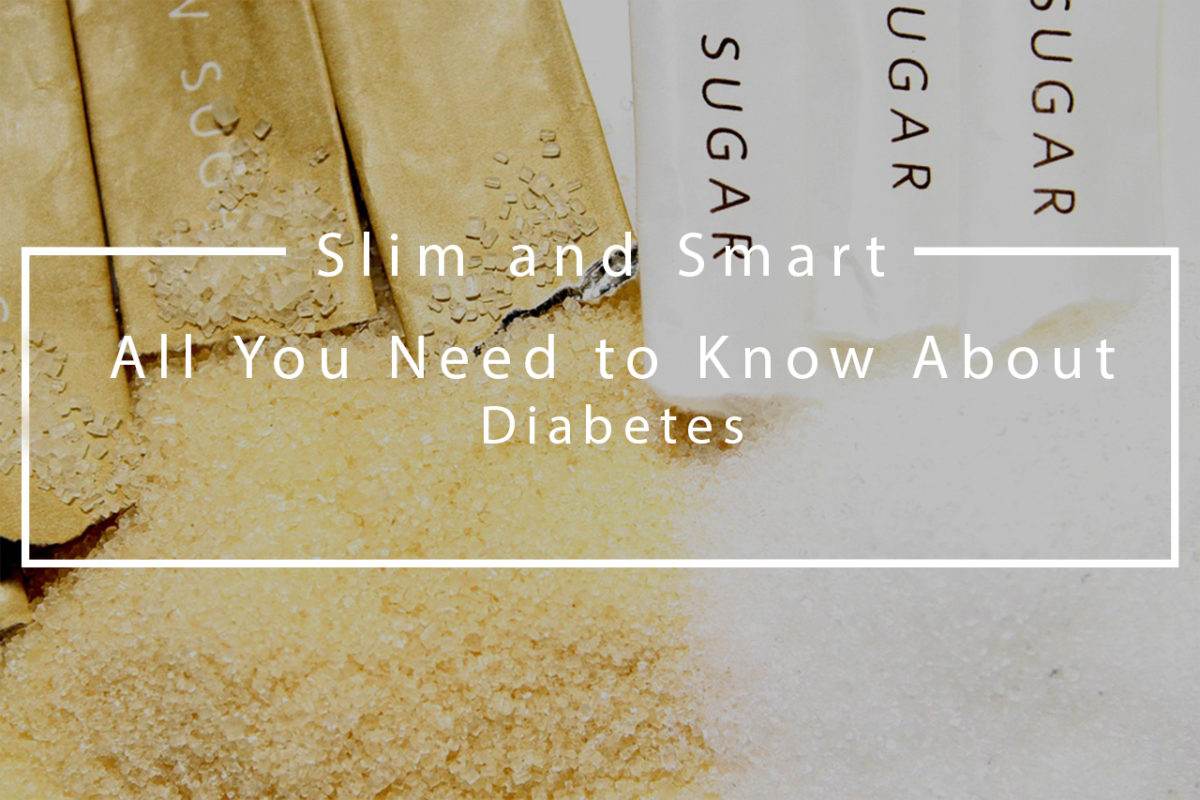Diabetes is a serious disease that affects thousands, even millions of people all around the world. According to Diabetes UK, over four million people (diagnosed & undiagnosed) are living in the UK, and this shocking number will reach 5 million by the end of 2025. Raising awareness is extremely important because with a bit of self-care, the risk of diabetes can be significantly reduced and even patients already diagnosed with diabetes can experience less unpleasant symptoms. In order to understand what diabetes is exactly, and how it develops, it is essential to observe the ’journey’ of sugar in the body. In this article you can find information about diabetes in general; we are going to characterize each type of diabetes and provide ways of prevention, because we believe that we can defeat diabetes with certain prevention methods and most importantly, lifestyle change! Join us and learn about the basics of diabetes now!
What is diabetes?
We all know that glucose (that is a subcategory of carbohydrates) is the main source of energy for our cells. Part of the glucose is absorbed in the intestine directly from the food we consume, the rest is produced by the liver. From the blood, glucose enters the body’s cells, with the help of insulin (FYI: insulin is a hormone produced by beta cells of the pancreas). Insulin comes from the pancreas, which is the gland that produces both digestive fluids and hormones, and it can be found just below the stomach. The insulin in the bloodstream acts like a key that opens the doors of the cells for the glucose to enter. Consequently, insulin is responsible for lowering the level of glucose in blood. As the blood sugar level drops, less insulin is released by the pancreas, and this creates the perfect balance of ‘sugar-digestion’.
In case of diabetes this complicated process is disturbed. Glucose cannot enter the cells, and therefore, it accumulates in the bloodstream. This can occur when the pancreas does not produce enough insulin (this is what we call Type-1 Diabetes), or when the cells become resistant to the glucose-delivering effect of insulin (this is what we call Type-2 Diabetes).
What are the main types of diabetes?
Many people have already heard about the different types of diabetes, mainly Type-1 and Type-2. Did you know that there are two, lesser known types as well? Read on, and you will see what are those.
Type-1 Diabetes
Type-1 diabetes mainly affects children and youngsters. In case of this serious condition, no insulin is produced by the pancreas, due to the destruction of the insulin-producing cells. Patients need to deliver insulin from external source during their life. Since glucose cannot enter the cells because of the lack of insulin, glucose stays in the bloodstream, causing high blood sugar level. Consequently, cells are ‘starving’ and start to convert protein and fat into sugar to prevent starvation. Due to the excessive fluid loss (higher amount of urine, thirst and weight loss are the most characteristics symptoms of diabetes) through urination, and the accumulation of ketone, which is a byproduct of fat burning, high blood sugar level can cause dehydration and even coma. Interestingly, the reason for the development of Type-1 diabetes is still not known. Researchers presume genetic predisposition, role of viruses and autoimmune origin.
Type-2 Diabetes
Contrary to Type-1, Type-2 diabetes mainly affects adults and older people. The insulin-producing beta cells are not destructed, but the insulin production is still not enough. Due to the weakening insulin effect, glucose cannot enter the cells, and the result is the same. The symptoms of Type-2 diabetes are slightly different because the insulin is there and the blood sugar level does not rise that fast. The main symptoms are the following: numbness in your limbs, wounds that do not heal fast, itching and blurred vision. There are several factors that increase the risk of Type-2 diabetes: obesity, high blood pressure, diabetes previously present in the family. There are many treatment methods: diet, oral medication and exercise. If these treatments fail, then comes the insulin treatment. Many studies have revealed that early insulin treatment helps prevent future complications.
And now come the lesser known types of diabetes, namely Type-3 and Type-4 diabetes. Type-3 can be distinguished on the basis of the underlying causes, and in this case there must be a special reason behind the sugar metabolism disorder. Type-4 or in other words, gestational diabetes occurs during pregnancy and fortunately it usually disappears after childbirth. However, those who suffered from gestational diabetes have a higher risk of developing diabetes later on.
Prevention
The increase in the number of patients with Type-2 is mainly due to our changed lifestyle. We move less and less, we go everywhere by car or by public transport, we use elevators and escalators on a daily basis, and we spend more and more time in front of the TV and computer. Sugar, fat, refined carbohydrate foods and processed foods also play a more significant role in our diet. Prevention of diabetes is very simple: live a more active life, eat healthier foods and get rid of excess weight. Lifestyle change is essential if you want to lower the risks of diabetes. Exercise has many positive effects: it is good for the circulatory system, bones and muscles. Moreover, exercising can help to lose excess weight, reduce appetite, improve the body’s insulin sensitivity, and can lower blood sugar level.
Contrary to the popular belief, it is not primarily the consumption sugary food that causes diabetes. Refined carbohydrates, too much fat and too many excess calories, as well as low-fiber food, all have a role to play in helping us to develop diabetes sooner or later. So, for prevention, it is advisable to reduce the consumption of sugar, refined carbohydrates (for instance white flour) and high fat foods. But this does not mean that you have to avoid your favorite food!
In our webshop, you can find all kinds of healthy and most importantly, delicious and diabetes-friendly food and ingredients.
Dia-Wellness products: https://slimandsmart.co.uk/product-category/dia-wellness-products/
Update products: https://slimandsmart.co.uk/product-category/low-carb-frozen/
KETO products: https://slimandsmart.co.uk/product-category/brands/update-1/keto/
You can find more articles about sugar HERE. For recipes with no added sugar, click HERE. We also have success stories about people who have defeated diabetes, click HERE.
Did you like this article? Make sure to like our Facebook page to get notified about new blog articles!
Check out our webshop to find high-quality, low-carb healthy snacks that can help boost your daily vitamin and mineral intake!
Legal disclaimer
All content available on Slim and Smart.co.uk provides general information and discussion about medicine, health, and related subjects. The blog articles, images, videos and other forms of content provided on this blog are not intended and should not be construed as medical advice. If the reader or any other person has a medical concern, he or she should consult with an appropriately-licensed physician. Never disregard professional medical advice or delay in seeking it because of something you have read on this blog or in any linked materials. If you think you may have a medical emergency seek for medical help immediately.

